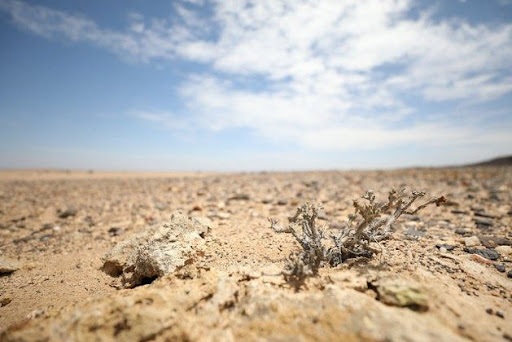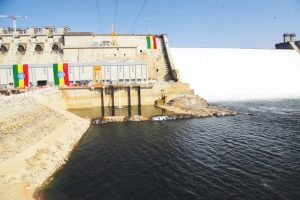
A report released this week, Tuesday, by the UN agencies, the World Meteorology Organization (WMO) collaborating the African Union Commission, the Economic Commission for Africa (ECA) through the Africa Climate Policy Centre (ACPC), and international and regional scientific organizations indicated that food insecurity, poverty and displacement of people in Africa is mounting due to climate change.
The report by the UN climate agency released entitled “State of the climate in Africa 2020” stated that the continued impacts of climate change have the capacity to shave three percent of Africa’s Gross Domestic Product (GDP) by the mid of this century, 2050. According to the report, by 2030, up to 118 million extremely poor people on the continent will be exposed to drought, floods and extreme heat, which will hinder progress towards poverty alleviation and growth.
The latest climate report on the African continent underlines the terrible situation of the continent’s increasingly frequent weather disasters will continue unless immediate adaptation measures are taken.
Surprisingly, the report predicted that Africa’s rare glaciers will disappear within the next 20 years and this will have a shocking impact on the continent. The report warned that the Kilimanjaro, Mount Kenya, Rwenzoris snow caps gone by 2040s. According to VOA report, The WMO report warns that the shrinking glaciers at Mount Kilimanjaro in Tanzania, Kenya’s Mount Kenya and the Rwenzori Mountains in Uganda are signs of widespread climate change to come. If the current shrinking rate continues, “it will lead to total deglaciation by the 2040s,” the report says.
The melting of Africa’s glaciers would have an impact for millions to face drought and floods in the continent, the report underlined adding, urgent adaptation actions are needed to control the problem, it added.
The report further stated that 2020 was Africa’s third warmest year on record, citing data; the report stated that temperatures on the continent were 0.86 degrees Celsius higher than the average in the 30 years leading up to 2010. The World Meteorological Organization warns that, VOA stated, Africa’s 1.3 billion people remain “extremely vulnerable” as the continent keeps getting warmer at a faster rate.
According to WMO website Josefa Leonel Correia Sacko, Commissioner for Rural Economy and Agriculture with the African Union Commission said that the increased weather and climate variability is disrupting lives and economies in the continent.
“In sub-Saharan Africa, climate change could further lower gross domestic product (GDP) by up to 3 per cent, by 2050,” the commissioner said. “This presents a serious challenge for climate adaptation and resilience actions because not only are physical conditions getting worse, but also the number of people being affected is increasing,” she added.
According to WMO, the report estimated that the investment in climate adaptation for sub-Saharan Africa would cost between $30 to $50 billion each year over the next decade, or roughly two to three per cent of GDP.
World Meteorological Organization (WMO) Secretary-General Prof. Petteri Taalas, according to the WMO website, stated that “during 2020, the climate indicators in Africa were characterized by continued warming temperatures, accelerating sea-level rise, extreme weather and climate events, such as floods, landslides and droughts, and associated devastating impacts” The Secretary-General said while publicizing the report on Africa’s climate that “the rapid shrinking of the last remaining glaciers in eastern Africa, which are expected to melt entirely in the near future, signals the threat of imminent and irreversible change to the Earth system.”
The authors of the “State of the climate in Africa 2020” stated rapid implementation of African adaptation strategies will spark economic development, as well as more jobs as part of post-pandemic recovery. Pursuing the priorities of an African Union green recovery plan would also allow for sustainable recovery as well as effective climate action, WMO noted.
To save the continent from the continued and fast devastating impacts of climate change, the WMO Secretary-General Prof. Taalas advised that “along with COVID-19 recovery, enhancing climate resilience is an urgent and continuing need. Investments are particularly needed in capacity development and technology transfer, as well as in enhancing countries’ early warning systems, including weather, water and climate observing systems.” The worst is coming unless timely action is being taken, he added.
Josefa Leonel Correia Sacko also added that “Africa is witnessing increased weather and climate variability, which leads to disasters and disruption of economic, ecological and social systems. By 2030, it is estimated that up to 118 million extremely poor people, living on less than US$ 1.90/day, will be exposed to drought, floods and extreme heat in Africa, if adequate response measures are not put in place.”
The Commissioner for Rural Economy and Agriculture, African Union Commission, Josefa Leonel Correia Sacko added that the continued weather and climate variability with its impacts on economy and ecology will place additional burdens on poverty alleviation efforts and significantly hamper growth in prosperity of the continent.
The WMO noted that Africa has warmed faster than the global average temperature over the land and ocean combined adding, the past 30-years warming trend of the continent was higher than that of 1961 to 1990 period in all African sub-regions. In addition, the rates of sea-level rise along the tropical and South Atlantic coasts and Indian Ocean coast are higher than the global mean rate, the report added.
Presently, only three mountains in Africa are covered by glaciers, WMO stated, the Mount Kenya massif, the Ruwenzori Mountains and Mount Kilimanjaro. Although these glaciers are too small to act as significant water reservoirs, they are of eminent touristic and scientific importance. Their current retreat rates are higher than the global average.
Extensive floods were reported across many parts of East Africa, the report stated, which lead for loss of life and significant displacement of populations, the report indicated adding many lakes and rivers reached record high levels in 2020. Due to climate variability and other factors like political instability and economic crises, a significant increase in food insecurity happens in the continent, it added.
The report added that, in 2020, there was an almost 40 per cent increase in population affected by food insecurity compared with the previous year. Desert locust invasion has also contributed for the food insecurity in the East and Horn of Africa, according to the recent report.
The report also revealed that an estimated 12 percent of new population displacements worldwide were occurred in the East and Horn of Africa region, with over 1.2 million new disaster-related displacements. Floods and storms contributed the most to internal disaster-related displacement, followed by droughts, WMO reiterated.
Climate-resilient development in Africa requires investments in hydro meteorological infrastructure and early warning systems to prepare for escalating high-impact hazardous events.
The report also recommended broadening access to early warning system and to information on food prices and weather has the potential to reduce the chances of food insecurity by 30 percentage points, it added. Rapid implementation of African adaptation strategies, according to the report, will spur economic development and resilience of the continent.
BY DARGIE KAHSAY
THE ETHIOPIAN HERALD OCTOBER 22/2021





